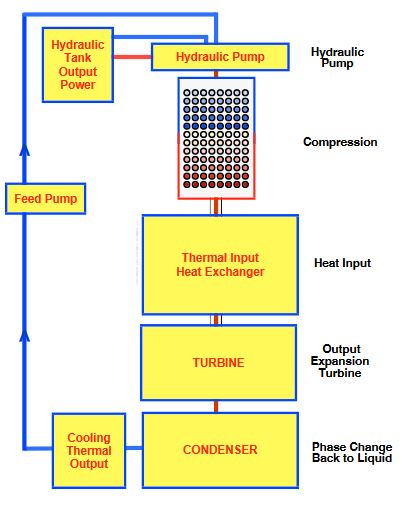US-based Infinity Turbine LLC has developed a heat pump turbine for residential and commerical applications.
“This system is viable in both residential and commercial sectors, since all use some form of cooling, available waste heat for use, or use of hydraulic power. The Cavgenx heat pump turbine is designed to be used with our saltwater redox flow battery (SRFB) Salgenx,” CEO Gregory Giese told pv magazine, adding that the system could be used in combination with PV power generation. “We are planning a pilot installation to evaluate this integration in a real-world setting.”
The heat pump turbine can also be combined with battery storage. “Incorporating batteries is a viable solution,” he said. “They can store excess energy generated during peak sunlight and supply power during low sunlight periods, ensuring continuous operation of the heat pump turbine.”
The manufacturer said the heat pump turbines are highly efficient in converting energy, leading to lower energy consumption.
“This efficiency translates to lower operational costs over time, especially in heating and cooling applications,” Giese said. “Grid-based arbitrage can be realized by using off-peak power from the grid to generate cold water via a Calmac system or ice, which can be used during on-peak power when electrical rates are much higher, realizing significant cost savings.”
The company is currently developing and testing the system in Madison, in the US state of Wisconsin. It wants to sell it in any market sector where heat pumps and hydraulic motors are used, which includes industry and large industrial equipment such as construction equipment.
“The system could be used to retrofit existing CO2 heat pump systems which are used for air conditioning, hot water, and process heat. Such systems realize the user 20-80 percent energy and cost savings,” Giese stated.

Image: Infinity Turbine LLC
This content is protected by copyright and may not be reused. If you want to cooperate with us and would like to reuse some of our content, please contact: editors@pv-magazine.com.




Exciting !
Wow, a novel concept. Cavitating a fluid into a hot gas, heating it with any available heat source, running it through a self sustaining turbine, and having hydraulic and cooling output with insane efficiency?! How has this not been done before? It sounds like magic. Is there a downside? Maybe pretty expensive and loud for residential use, especially with the flow battery. I’m very interested to see where this tech goes next. How can we invest?
I’m not convinced Flow Battery is the right term, but maybe best before investing, to undertake some kind of due diligence about what is being suggested here? I think we should look at engineering costs before making a commitment…